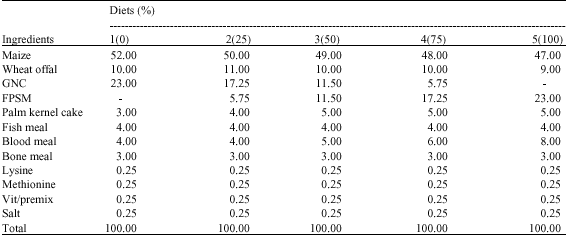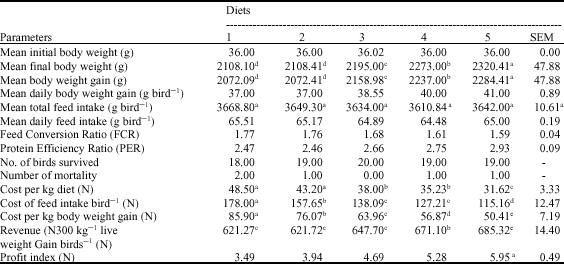Research Article
Performance, Digestibility and Carcass and Organ Weights of Finisher Broiler Chicks Fed Graded Levels of Fermented Locust Bean (Parkia biglobosa) Seed Meal
Department of Animal Production Technology, Federal College of Wildlife Management, P.M.B. 268, New Bussa, Niger State, Nigeria













